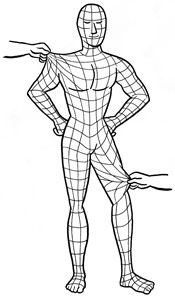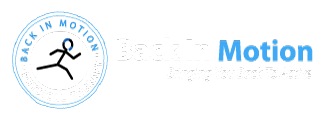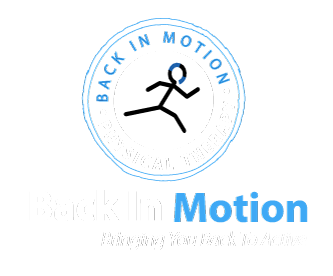Fascia. What in the world is “fascia”?
Fascia is the connective tissue that covers and lines the muscles of the body. Fascia is the sheet that overlies and weaves in between the fibers of muscles. It gives our body its shape and support. It allows the muscles to glide on one another as they contract and relax by lubricating and coating each muscle fiber. It lays on top of the muscular layer, anchoring it to skin, as well as beneath the muscular layer, anchoring it to the bone; it also wraps around each muscle, muscle fiber, and each individual muscle cell within a muscle.

Fascia is liquid-based. “Well,” you ask, “how is a liquid-based substance strong enough to provide structural support?” Think of it similar to asphalt. Asphalt is a very slowly moving liquid (or a semi-solid), so it seems perfectly solid to us, but its liquid make up actually allows it to be both flexible and strong, adjusting as needed to withstand weather, pressure, and weight. The same goes for fascia. The web-like, dewy network of fascia provides a perfect base for covering, connecting, protecting, and supporting all the tissues in the body. The juicier, the better. Well hydrated tissue keeps the body moving more fluidly and easily, with less pain and restriction.

Fascia Patterns
All of this is one continuous sheet of connective tissue in the body, with patterns reaching in different directions. These directional patterns are sometimes called fascial trains, and they can dictate patterns of referred pain and muscular tension. Imagine a piece of fabric stretched over a string like a pup tent you made for camping in your back yard. If you push on the fabric on one side, it’s going to pull tighter on the rest of the fabric.

This same thing happens when we get restrictions and tightness in one area and it affects another area within the body. Remember that time you hurt your right hip but for some reason your left shoulder was in pain? Fascia. This is a great reminder of the interconnectedness of the body. Very little is isolated in the body when dealing with the musculoskeletal system (or any system for that matter). So addressing pain issues often requires addressing fascial restrictions and tightness.

What is Fascia Pain?
Pain that arises in the muscles and connective tissue can be a difficult condition to live with. Often times trigger points develop in the muscles and fascia, or adhesion in the fascial layers create restricted movement. Sometimes this pain develops into Myofascial Pain Syndrome, a more complex version of connective tissue and muscle pain, often distributed throughout the body. A common example of a painful fascial condition is plantar fasciitis, the irritation or strain of the connective tissue on the plantar surface, or the sole of the foot.

Since, as we talked about earlier, the body has long continuous sheets and patterns of fascia, this plantar connective tissue is continuous with that of the back of the leg and low back. So sometimes stretching the hamstrings and low back will help to relieve some plantar fasciitis pain. *Helpful Hint*
Fascial pain can affect the body in other areas than the foot. It can cause pain and limit motion around injured shoulders and knees as the connective tissue that normally supports the joints thickens after injury. It can create painful trigger points in the neck and upper back that make it difficult to extend the arms in front, lift the arms over head, or turn the head side to side. Overly tight fascia in upper leg can produce painful stiffness through the outside of the leg and hip via IT Band Syndrome, affecting the long band of thick fascia called the Iliotibial Band (IT Band) that connects the outside of the knee with the hip.
What to Do About the Pain
First thing to do is to drink MORE WATER. As we talked about before, fascia needs to be well hydrated to be properly working in the body. Try to drink about half your body weight in fluid ounces. If you weigh 150lbs, try to drink about 75 oz of water a day. It may seem like a lot at first, but the more you stay hydrated, the more you’ll realize how much better you feel.
The next thing to try is some gentle stretching in the area that is most restricted. Try to hold these gentle stretches for up to 2 minutes. Stretching quickly (like we do when we are warming up to go running or play sports) is not slow enough and relaxed enough to stretch at the connective tissue layer. Try a yin yoga class for these prolonged stretches, but go slowly and be gentle on the body. We want to create space in the tissues, not strain to get deeper and create more tension. Don’t forget to breathe deeply and slowly.
Whatever the source of fascial pain, it is important to address the problem quickly so the condition does not progress to a state needing surgical or invasive treatment. If you’re looking to relieve pain in the muscle and fascia, or looking to increase flexibility, we can help to stretch your fascia and restore it to a healthy, happy tissue. From physical therapy, to Active Isolated Stretching, allow us to aid in your return to proper function and form–you will feel better and move easier!
Show your fascia some love:
Call Us To Set Up an Appointment Today!
-Written by Becca Chamberlain, LMT, RYT


0 comments